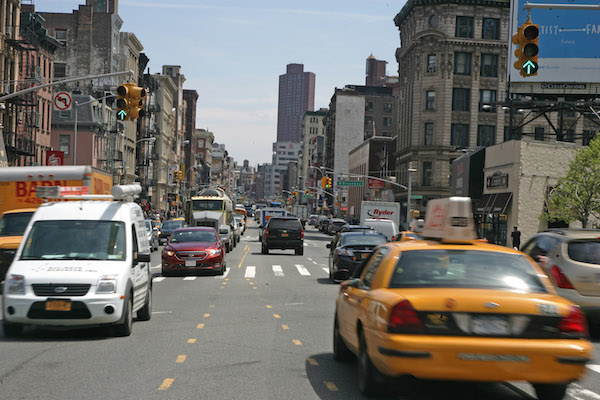
BY SAM SPOKONY | Citing numerous traffic fatalities along its 1.5-mile stretch, the city’s Department of Transportation announced Thursday that Canal St. will soon become a slow zone.
That move will lower the speed limit along all of Canal St. — which runs from E. Broadway to West St. — to 25 miles per hour. The limit is currently 30 miles per hour on the hazardous pedestrian stretch near entrances to the West Side Highway, the Holland Tunnel and the Manhattan Bridge.
D.O.T. said in its announcement that the change is planned for June.
This makes Canal St. the first Lower Manhattan street to be included in D.O.T.’s new “arterial slow
zone” program, which specifically targets the city’s major streets. The Department has said that while these traffic-heavy, arterial roadways comprise just 15 percent of city streets, they account for 60 percent of traffic fatalities.
There have been six fatalities along Canal St. since 2008, according to D.O.T.
“Sometimes it seems as if Canal St. is a perpetual slow zone — but slowing down traffic on Canal, which bustles with bicycles, pedestrians and vehicles all day long, is the right thing to do,” State Sen. Daniel Squadron, whose district covers the eastern portion of the street, said in a statement Thursday. “This heavy volume of road use is exactly what makes Canal Street a great candidate for an arterial slow zone.”
State Sen. Brad Hoylman, whose district covers the western portion of the street, also applauded the announcement, calling Canal St. one of the “most dangerous roadways in my district.”
Thursday’s announcement also included several other planned arterial slow zones across the city, including an 8.3mile stretch of Broadway between Columbus Circle and W. 220th St.
The first two arterial slow zones were launched earlier this month, in Brooklyn and the Bronx, and eleven other zones — including Canal St. — have since been announced. D.O.T. has said it plans to introduce 25 arterial slow zones by the end of the year.
FEDERAL, STATE AND CITY OFFICIALS HAVE BEEN STUDYING AND TALKING ABOUT CANAL ST. SAFETY FOR AT LEAST A DECADE. CHECK OUT THESE PAST ARTICLES.


































